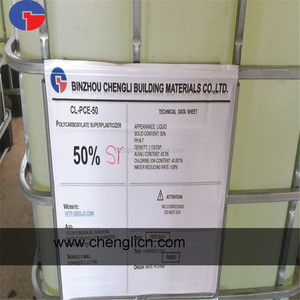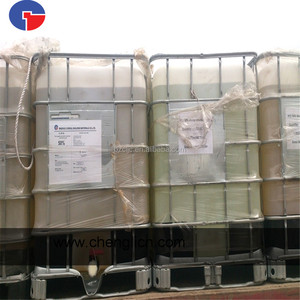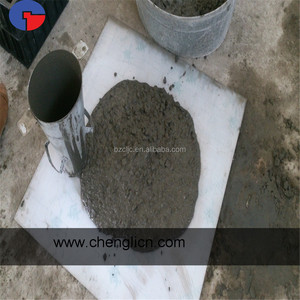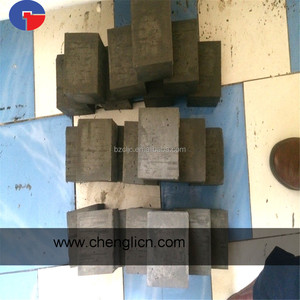(1 products available)






Construction projects often use Fosroc admixtures to improve the strength and durability of concrete structures. These admixtures are categorized into two broad classes: chemical and mineral admixtures.
Chemical admixtures are further divided into:
Water-reducing admixtures
Water-reducing admixtures increase the workability of fresh concrete without adding extra water. This makes it easy to pour and mold into desired shapes. The added water-reducing admixture also produces concrete with a higher compressive strength that hardens uniformly.
Retarders
Retarders control the setting time of concrete in hot weather conditions. They prevent concrete from setting too quickly, allowing construction teams enough time to pour and mold the concrete. This is important when working with large concrete batches that need more time before they set.
Accelerators
Accelerators are admixtures used in cold weather conditions to prevent concrete from freezing. They increase the rate of hydration, allowing concrete to set quickly and gain early strength. This is important when a concrete structure needs to be used before the concrete is fully cured.
Superplasticizers
Superplasticizers are modern-day water-reducing admixtures. They significantly reduce the viscosity of fresh concrete, allowing it to flow easily through tight spaces. This is especially useful in constructing reinforced columns and bridges.
Mineral admixtures are derived from natural materials or by-products of different industrial processes. They include:
Fly ash
Fly ash is a pozzolanic material that consists of spherical glassy particles. It is used to improve the workability and durability of concrete. When mixed with lime and water, fly ash forms stable cementitious compounds that improve the strength of concrete.
Silica fume
Silia fume is a by-product of producing silicon metal or ferrosilicon. It contains very fine, non-crystalline silica particles. Silica fume increases the density of the concrete matrix. It also increases the long-term strength and durability of concrete structures.
Ground Granulated Blast Furnace Slag (GGBFS)
This admixture is made from iron production. It contains calcium silicate and aluminosilicate minerals. Like fly ash, GGBFS is a hydraulic admixture that reacts with lime to form cementitious compounds. It improves the workability of concrete and minimizes permeability.
Concrete admixtures are used to modify the basic properties of concrete. The key functions of Fosroc admixture include the following:
Water Reducing
Water reducers make the necessary water to be added to the concrete mix to be reduced without reducing its strength. This leads to a more solid concrete structure, which makes it more durable.
Retarders
Retarders slow down the setting time of concrete. This is important when one is working in hot weather, as it prevents the concrete from setting too quickly. Retarders also allow for more extended work time and more significant and better results.
Accelerators
Accelerators reduce the setting time of concrete. This is a preferred choice when one needs concrete that cures quickly. Accelerators are mostly used in cold weather, as without them, the concrete would set too slowly.
Air-entraining admixtures
These types of admixtures introduce small air bubbles into the concrete mix. This is important as it improves the concrete's workability and overall strength. Air-entraining admixtures also make concrete withstand harsh weather conditions, preventing it from cracking or damaging.
Superplasticizers
Superplasticizers are usually referred to as high-range water reducers. They allow a concrete mix with very low water content. This results in high-strength concrete. Superplasticizers also improve the workability of the concrete mix.
Viscosity-modifying admixtures
These admixtures serve two purposes. They improve workability by making the mix more fluid. They also enhance the stability of the concrete mix, especially when dealing with high water content. This prevents segregation.
Corrugated plastic sheets
These are Fosroc admixtures that help control the formation of cracks in the concrete. They absorb and release moisture, which allows for temperature control within the curing concrete. This is vital since temperature differentials are a significant cause of cracks.
Fosroc admixture helps enhance the performance of concrete in different applications. Its applications include:
Mass concrete projects
Mass concrete projects involve the construction of huge structures that require large volumes of concrete. Such structures include foundations, dams, walls, and bridges. These structures require a strong, durable, and workable concrete mix. Fosroc admixture enhances the performance of concrete in these structures. The admixture reduces the heat of hydration, minimizing the risk of thermal cracking. It also increases the workability of concrete, making it easy to mold and compact. Most importantly, it increases the strength and durability of concrete, ensuring that the structures remain stable for many years.
Hot weather construction
Admixtures are essential in hot weather construction to ensure that concrete performs as expected. When building in hot weather, the temperatures are usually high. This leads to the rapid setting of concrete and an increase in its temperature. As a result, concrete loses workability and hydration. However, fosroc admixture, especially the retarders, reduces the setting time of concrete. This allows for efficient mixing and transportation. Water reducers are also incorporated in the mix to reduce the amount of mixing water while increasing concrete workability.
Cold weather construction
Cold weather construction involves building in temperatures below 40 degrees Fahrenheit. The temperatures are usually above freezing, but in some cases, they can be lower. In such conditions, concrete sets slowly, which can lead to delayed construction. Fortunately, fosroc admixture, also known as concrete accelerators, speed up the setting and curing of concrete. This minimizes the risk of freezing and ensures that construction is done within the required timelines.
High-performance concrete
Structures such as skyscrapers and parking decks require high-performance concrete. These structures are subject to constant stress, aggressive environmental conditions, and chemical attacks. Fosroc admixture helps create strong and durable high-performance concrete. The superplasticizers increase the workability and flow of concrete without adding extra water. This ensures that the concrete achieves the required strength. The Pozzolans reduce the permeability of concrete, preventing water from entering and weakening the structure.
When choosing the appropriate admixture for a specific construction project, several factors must be considered. These factors will influence the performance of the concrete mix.
Project Requirements
The project requirements will define the strength, durability, and specific needs of the concrete mix. For example, if a high-strength concrete is required, a water-reducing admixture that helps achieve that without wasting water can be selected. Alternatively, if the project is located in a place with a cold climate, a suitable curing compound for concrete must be chosen to work under those conditions.
Environmental Conditions
The environmental conditions at the construction site significantly influence the choice of concrete admixture. Certain admixtures are better suited for specific environmental conditions. For example, some of them can be used in extremely hot or cold weather, while others can be used in humid or dry areas. Moreover, the environmental conditions affect the performance and durability of the concrete, thus necessitating the choice of the correct admixture.
Concrete Mix Design
The concrete mix design is a fundamental factor influencing the selection of a Fosroc admixture. This is because the mix design determines the desired properties of the fresh and hardened concrete. It also includes the water-cement ratio, workability requirements, and curing conditions. Therefore, the correct admixture that will yield the desired results has to be selected.
Regulatory Standards
Regulatory standards are a crucial factor influencing the selection of concrete admixtures. This is because there are specific standards and guidelines outlining the acceptable use of concrete admixtures in construction. Therefore, to ensure compliance with the legal requirements, the appropriate admixture has to be selected.
Q: What are Fosroc admixtures and their types?
A: Admixtures are chemical compounds that are added to concrete, cement, or mortar to enhance the performance of concrete. Their types include; water-reducing admixtures, retarding admixtures, accelerating admixtures, and air-entraining admixtures.
Q: What are the fosroc admixture products?
A: Some of the products include; Concreguard, which is a ready-to-use, protective coating for curing concrete; and Concrex, which is a shrinkage-compensating, high-strength, and fast-curing construction grout. Others are; Cementfix, a high-strength, fast-setting construction adhesive, and Supercast, a range of durable and easy-to-install waterstops.
Q: What are the benefits of fosroc admixtures?
A: The admixtures improve the workability of concrete, enhance corrosion resistance, reduce water permeability, and prevent shrinkage cracks. They also improve the setting time and increase the strength and durability of concrete.
Q: Are fosroc admixtures harmful?
A: The admixtures are not harmful when handled properly. However, they can be harmful if they come into contact with skin or are inhaled. It is important to follow the instructions and safety guidelines when using fosroc admixtures.